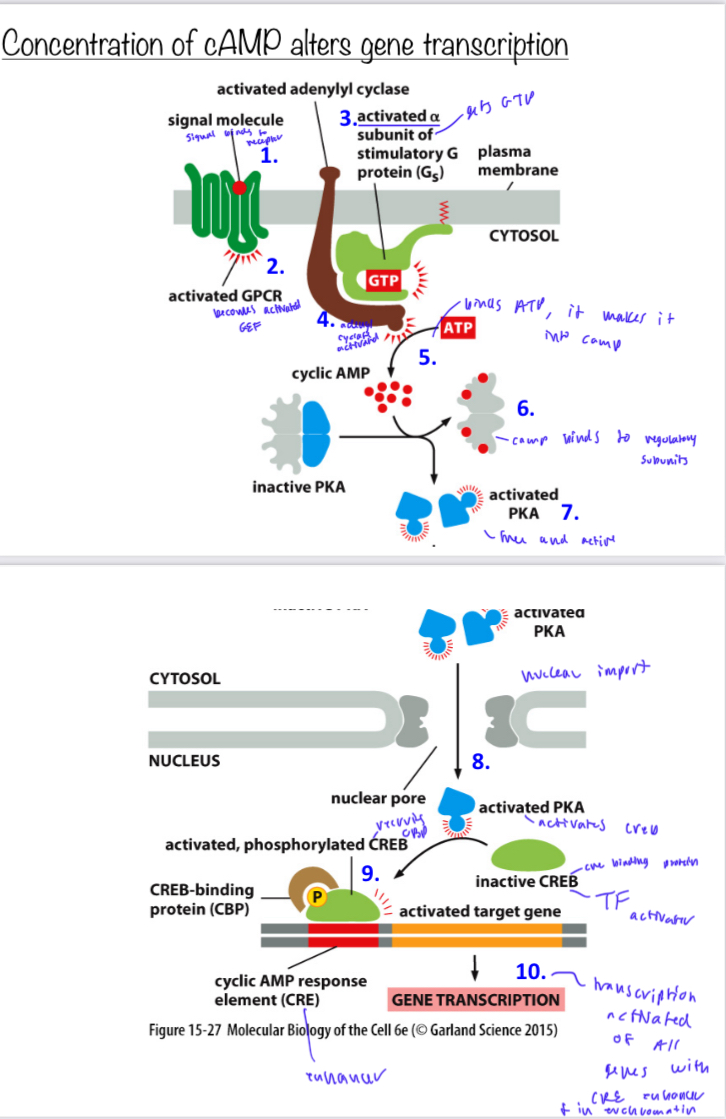Chapter 15: Cell Signaling
1/44
There's no tags or description
Looks like no tags are added yet.
Name | Mastery | Learn | Test | Matching | Spaced |
|---|
No study sessions yet.
45 Terms
a ligand receptor binding event is
highly specific
the binding event changes the shape of the receptor protein

3 types of pathway effector proteins
altered metabolism through a metabolic enzyme
altered gene expression through a transcription regulatory protein
creating a TF to bind to an enhancer/repressor
altered cell shape or movement through a cytoskeletal protein
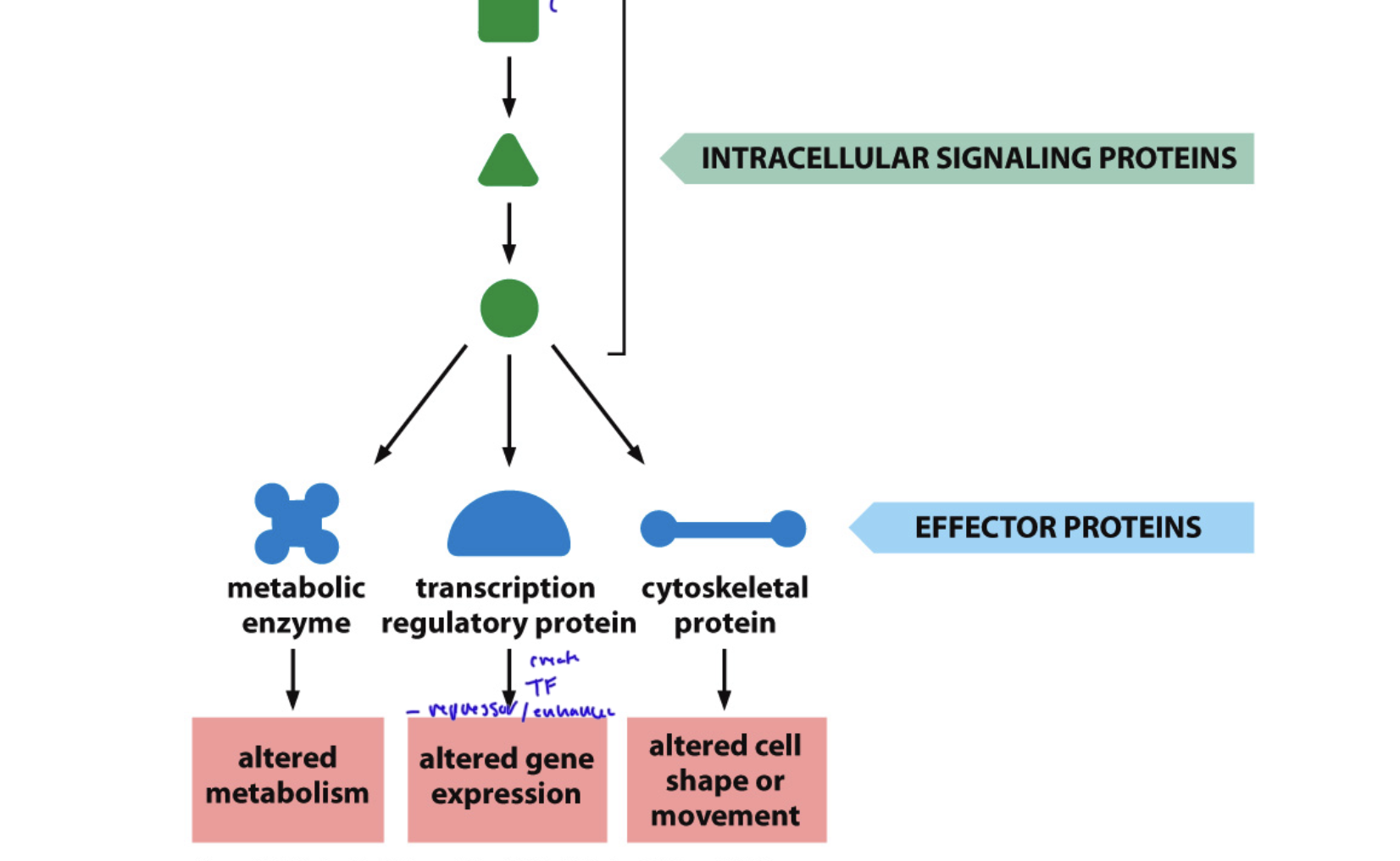
4 types of intercellular signaling
contact-dependent
paracrine
synaptic
endocrine
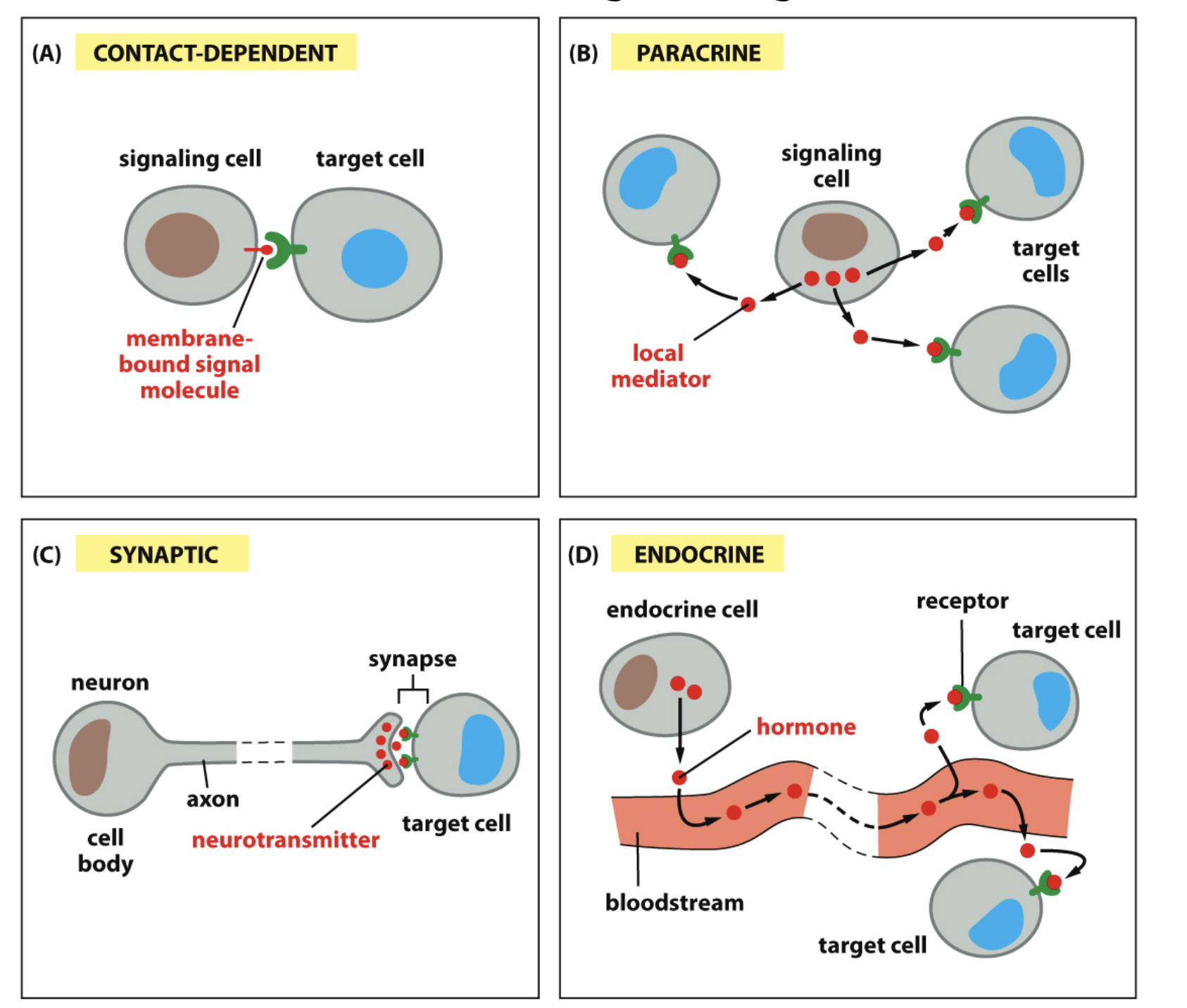
contact dependent pathways
use a membrane-bound signal molecule, which binds to a transmembrane receptor on another cell
cells must be touching
used in immune cells to be showed something foreign
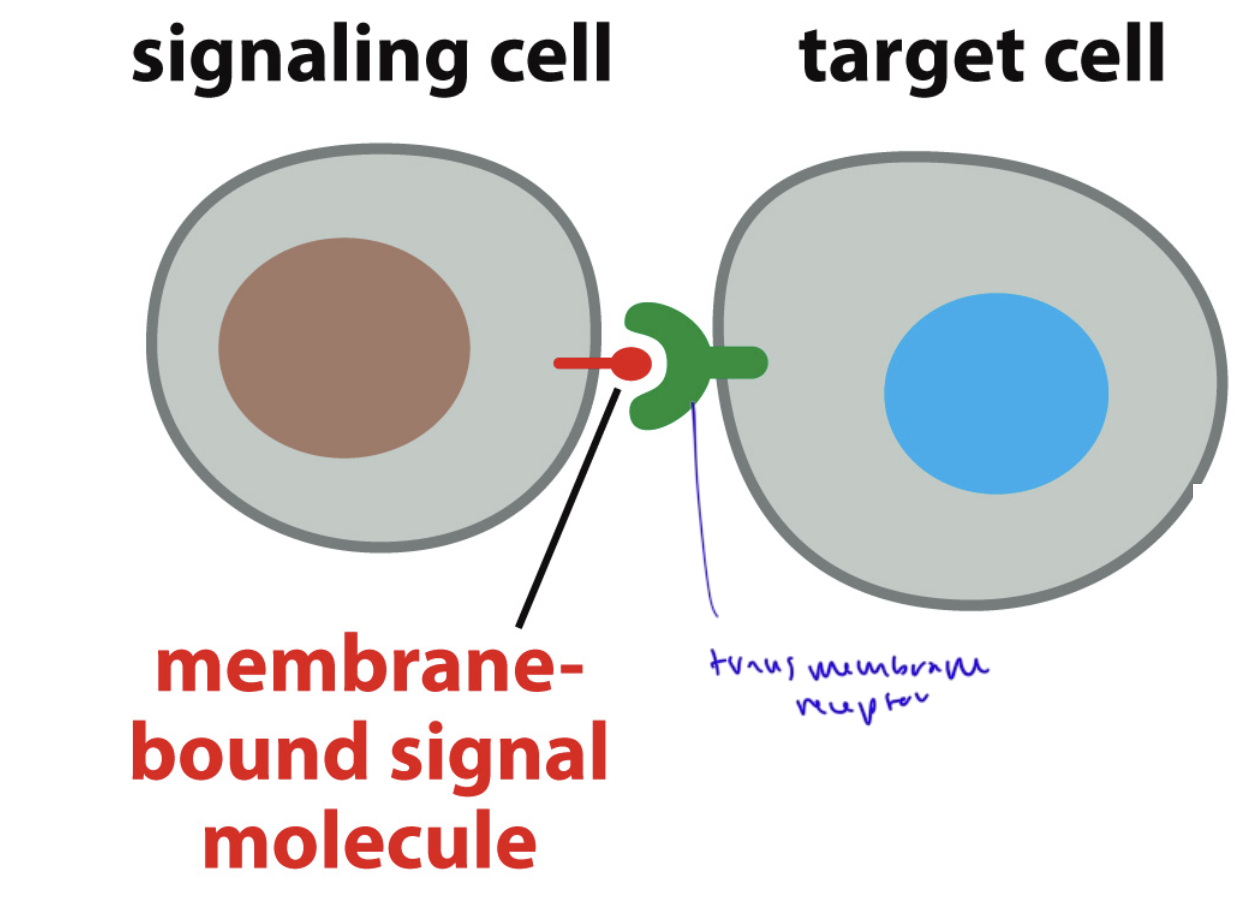
paracrine pathways
local signaling for short distances
signals go to transmembrane receptors
ex: in blood clot formation of nearby cells by the cut
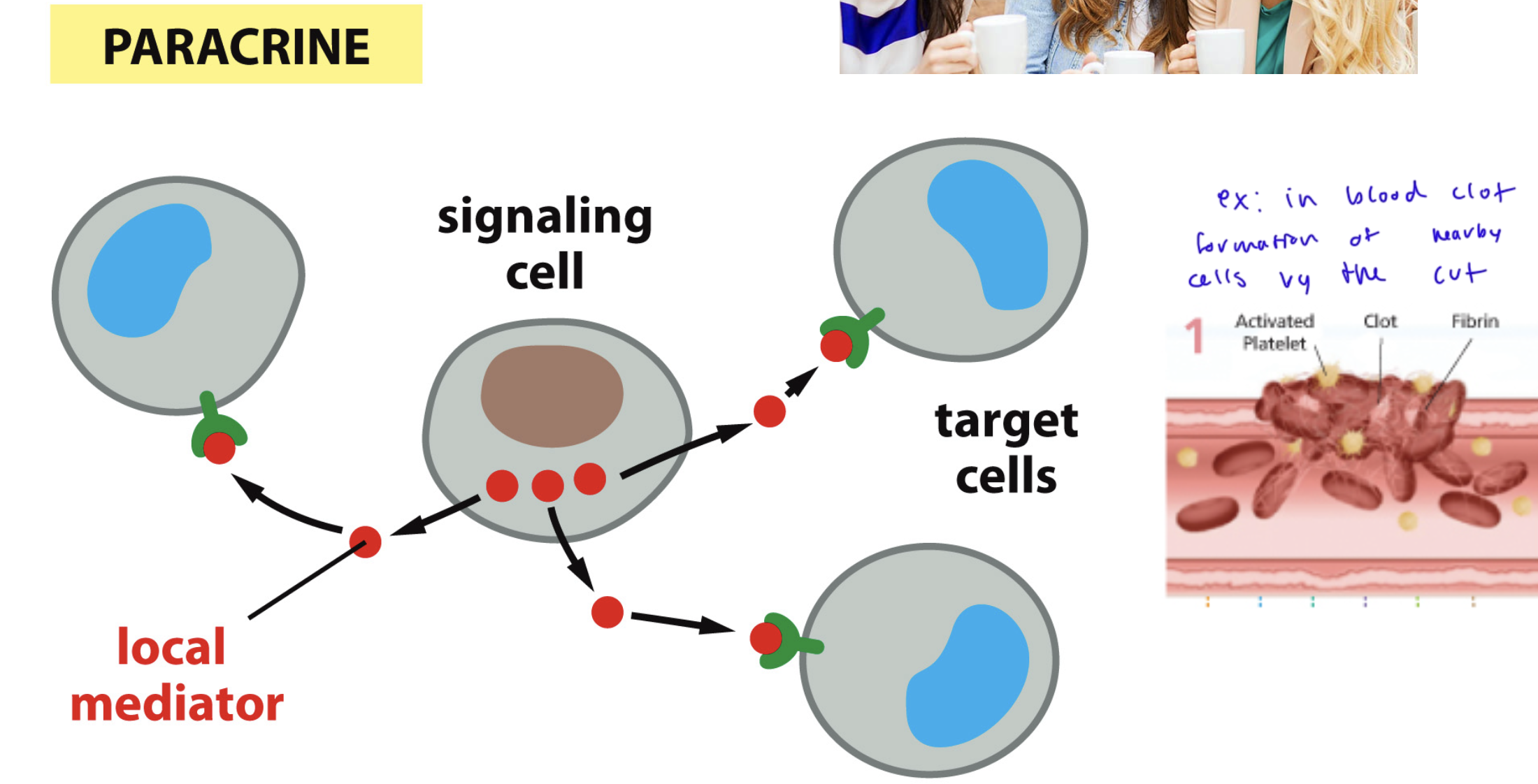
synaptic pathways
long distance signaling in neurons/ nervous tissue
the axon can be any length (longest is from tailbone to big toe)
neurotransmitters are released from synapse and go to the target cell
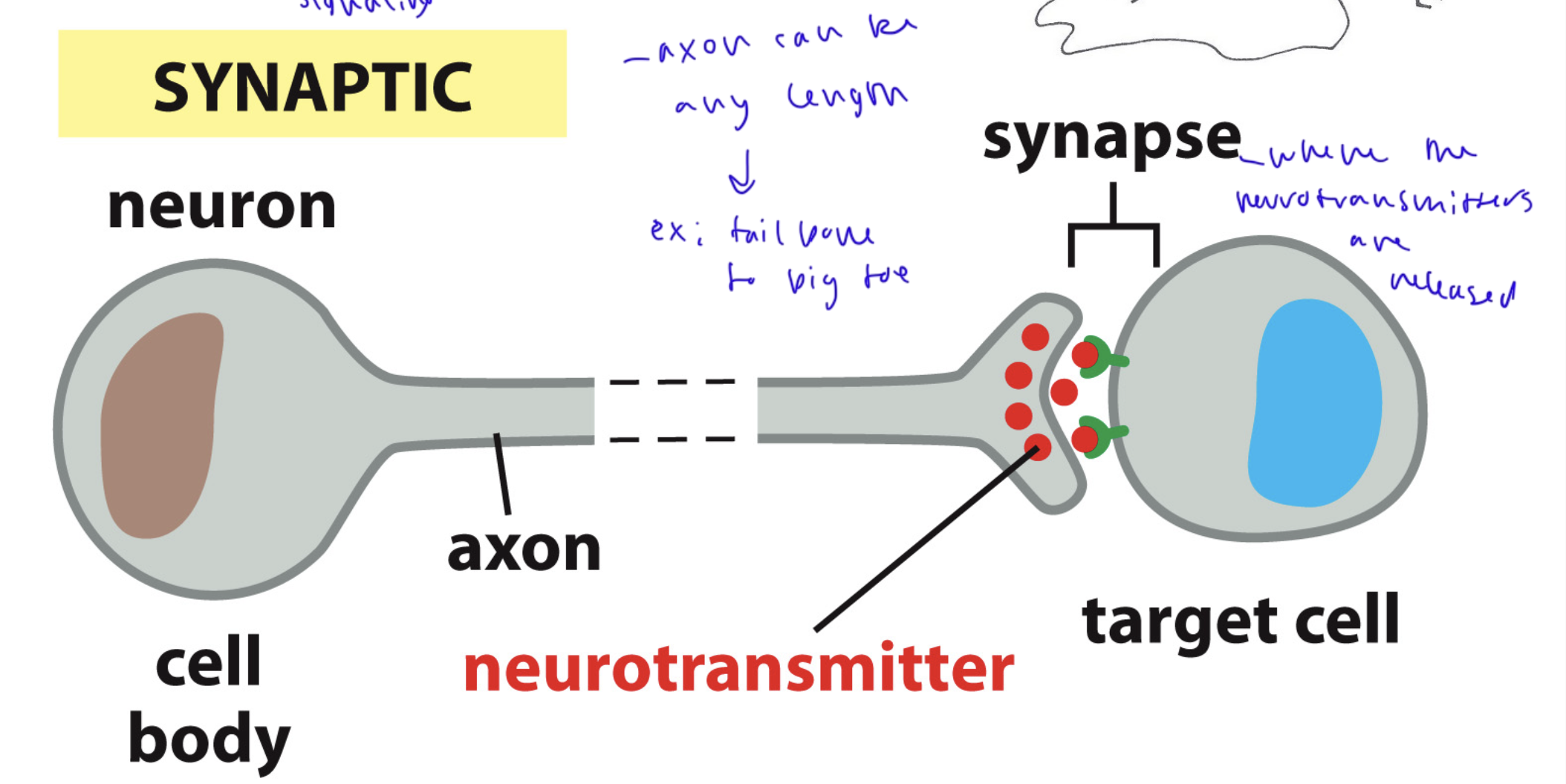
endocrine pathways
signaling over long distances through the bloodstream
hormones are released by endocrine glands and bind to receptors on distant target cells
best way to reach the most cells the fastest
if any other cell in the bloodstream has that receptor, it will get the signal
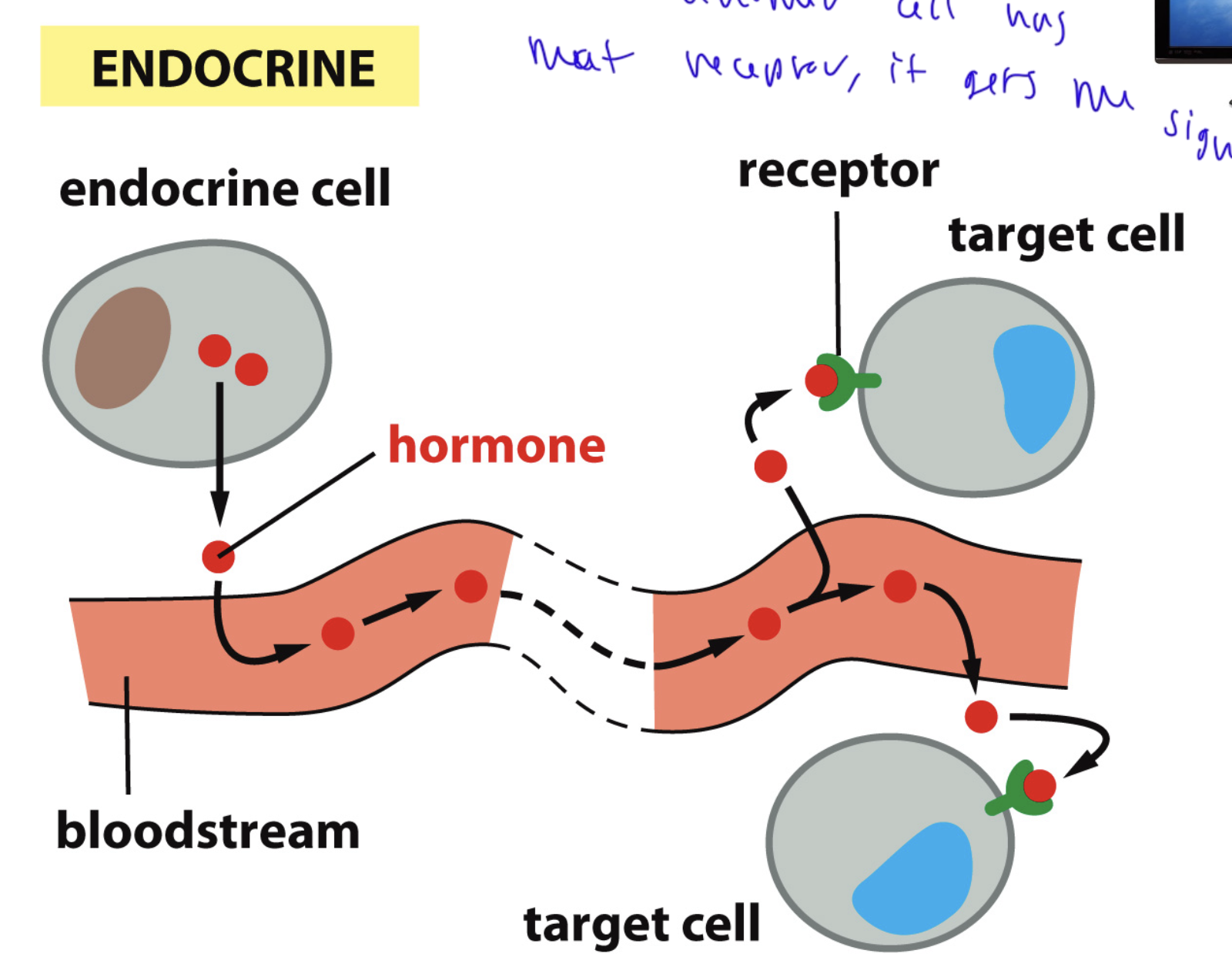
ion-channel coupled receptor
like a ligand gated channel
when solute (non-ion usually) binds to the binding sites, ions can flow through the receptor, which is now open
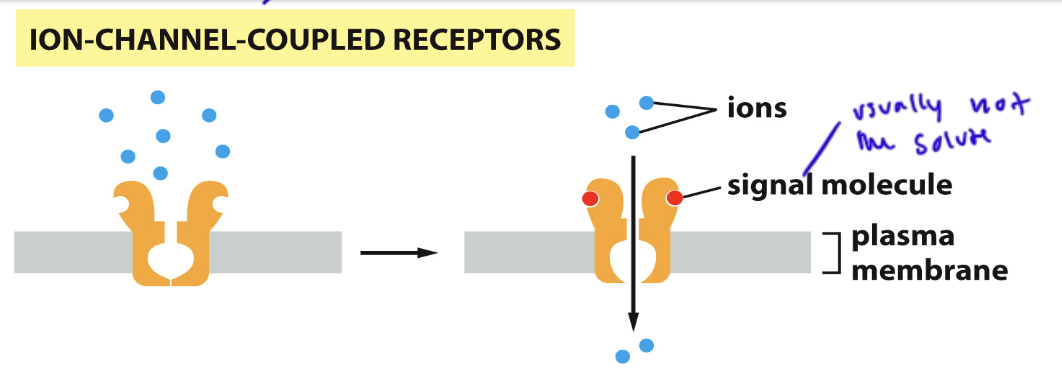
3 types of receptors
ion channel coupled receptors
g-protein coupled receptors (GPCR)
enzyme coupled receptors
how np signal molecules get in to the cell
attach to carrier protein (which is polar) to get through the polar ECM
need an intracellular receptor protein to get into the nucleus
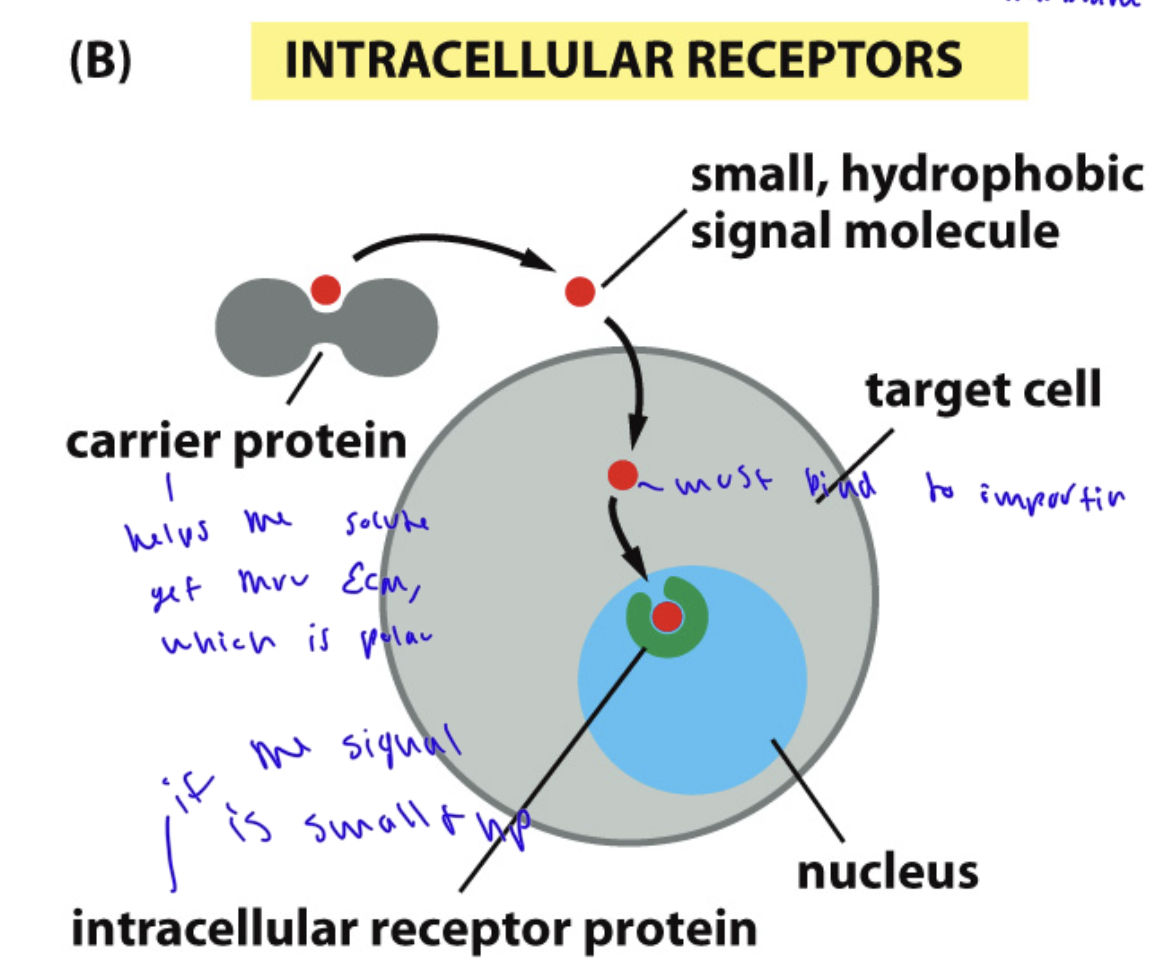
Phosphorylation can turn pathways
on or off
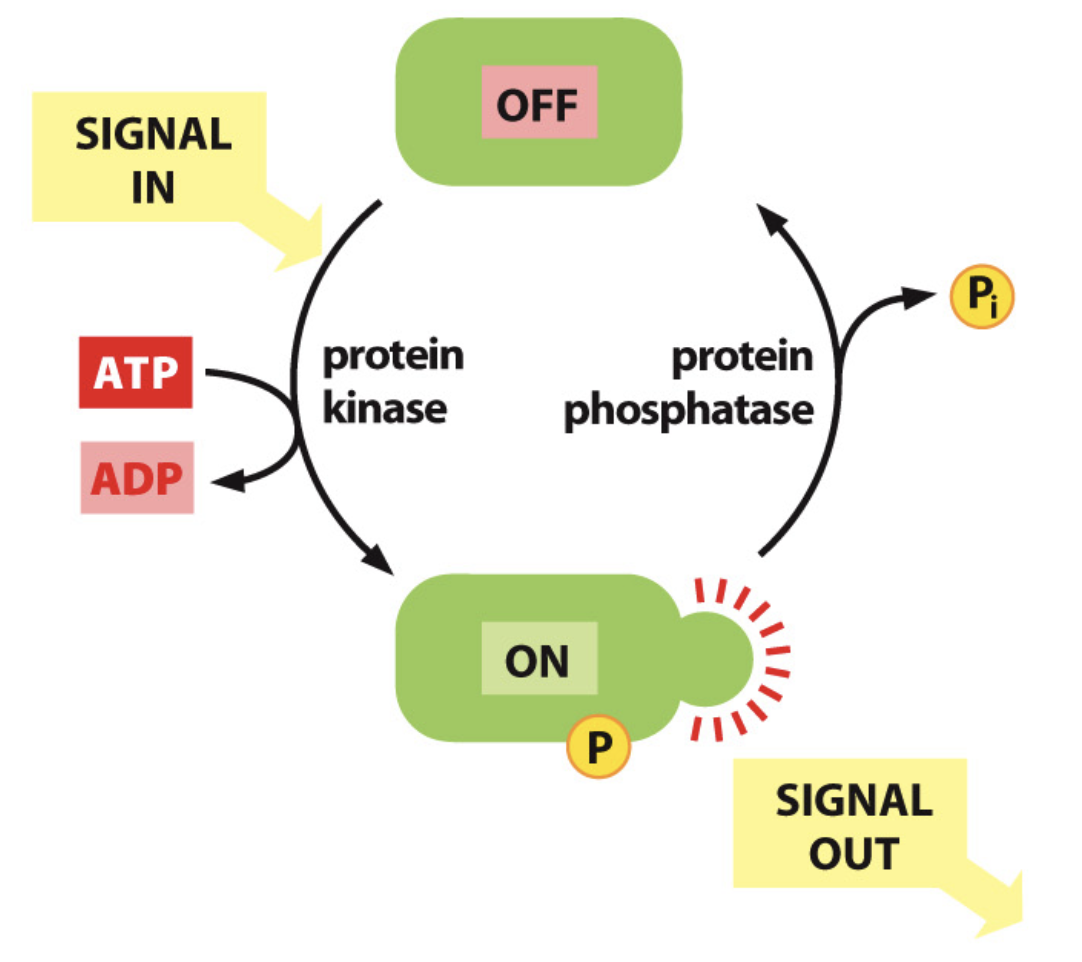
GTP binding turns pathways
ON
mediated by GEF and GAP
Factors in cell signaling
response timing
sensitivity (how much signal is needed)
dynamic range (over what range of [signal] do you get activation)
persistence (how long response lasts)
signal processing (on/off/oscillatory/cyclical)
integration (need multiple signals/inputs?)
coordination (multiple responses to one signal)
Cells require signals just for
baseline survival
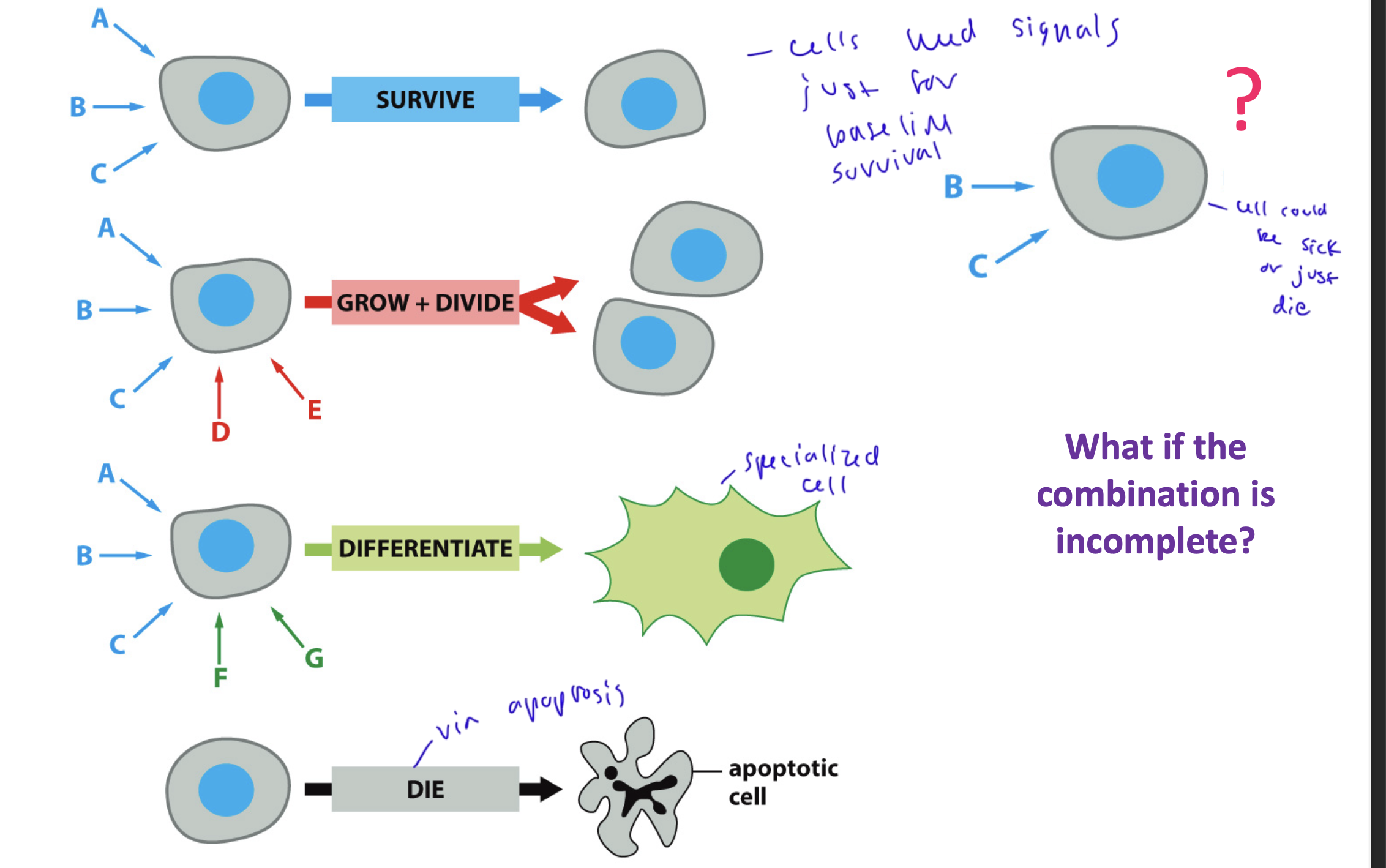
Acetylcholine
causes many different responses in diff cells
Heart pacemaker cell: causes decr firing of heart rate
Salivary gland cell: causes saliva to be released
Skeletal muscle cell: causes muscle contraction
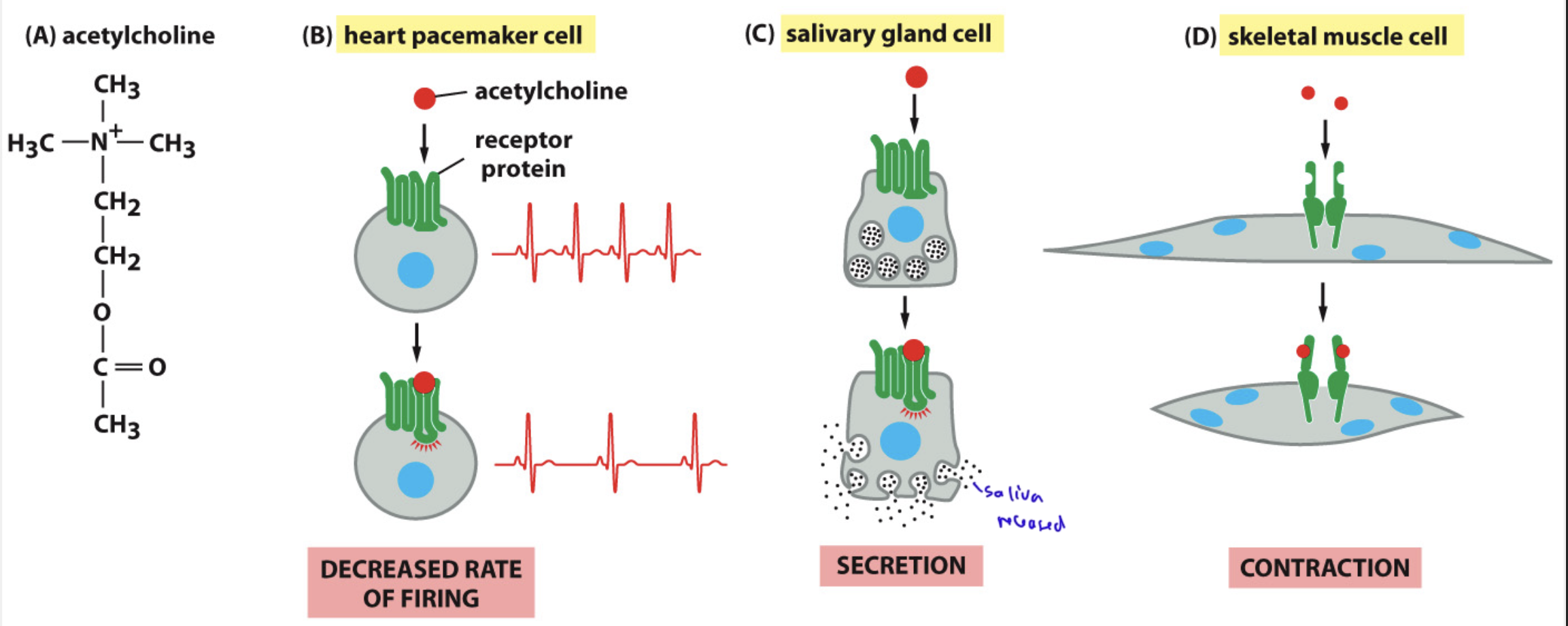
arrow pushing pathways
arrow shows activation
perpendicular sing shows inhibition
double negatives show activation
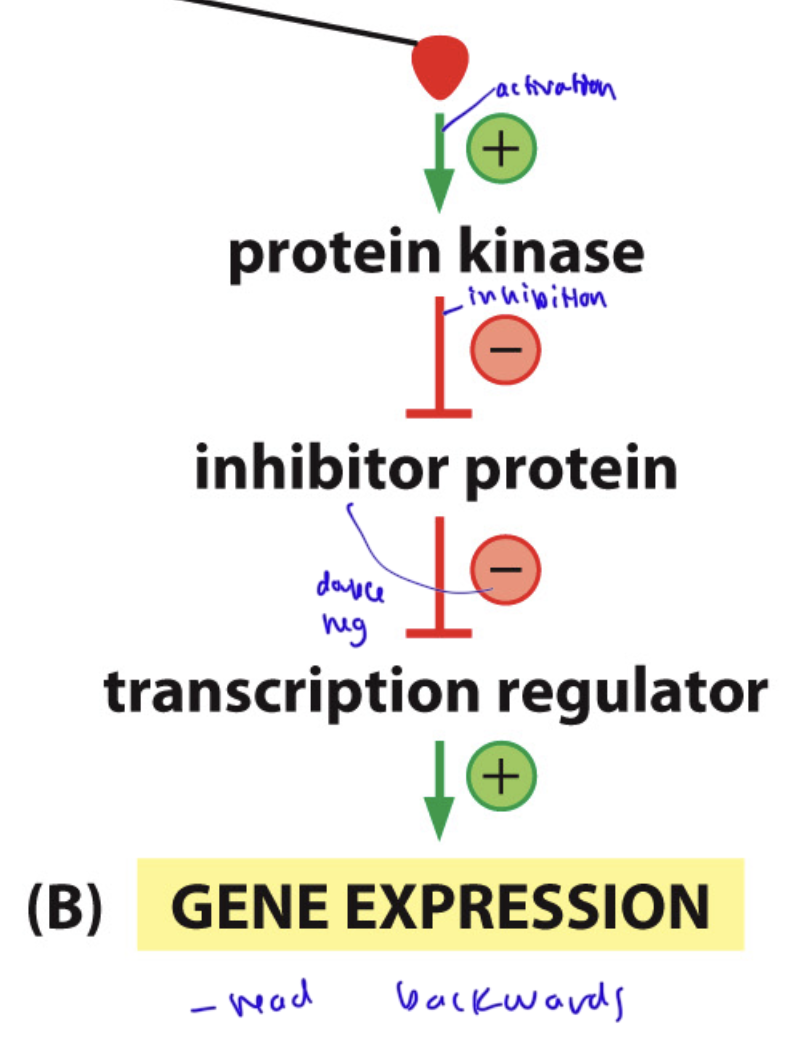
different ways to show a pathway

Scaffold proteins
collect/ hold things needed for a pathway so that it can occur readily as the proteins are already recruited
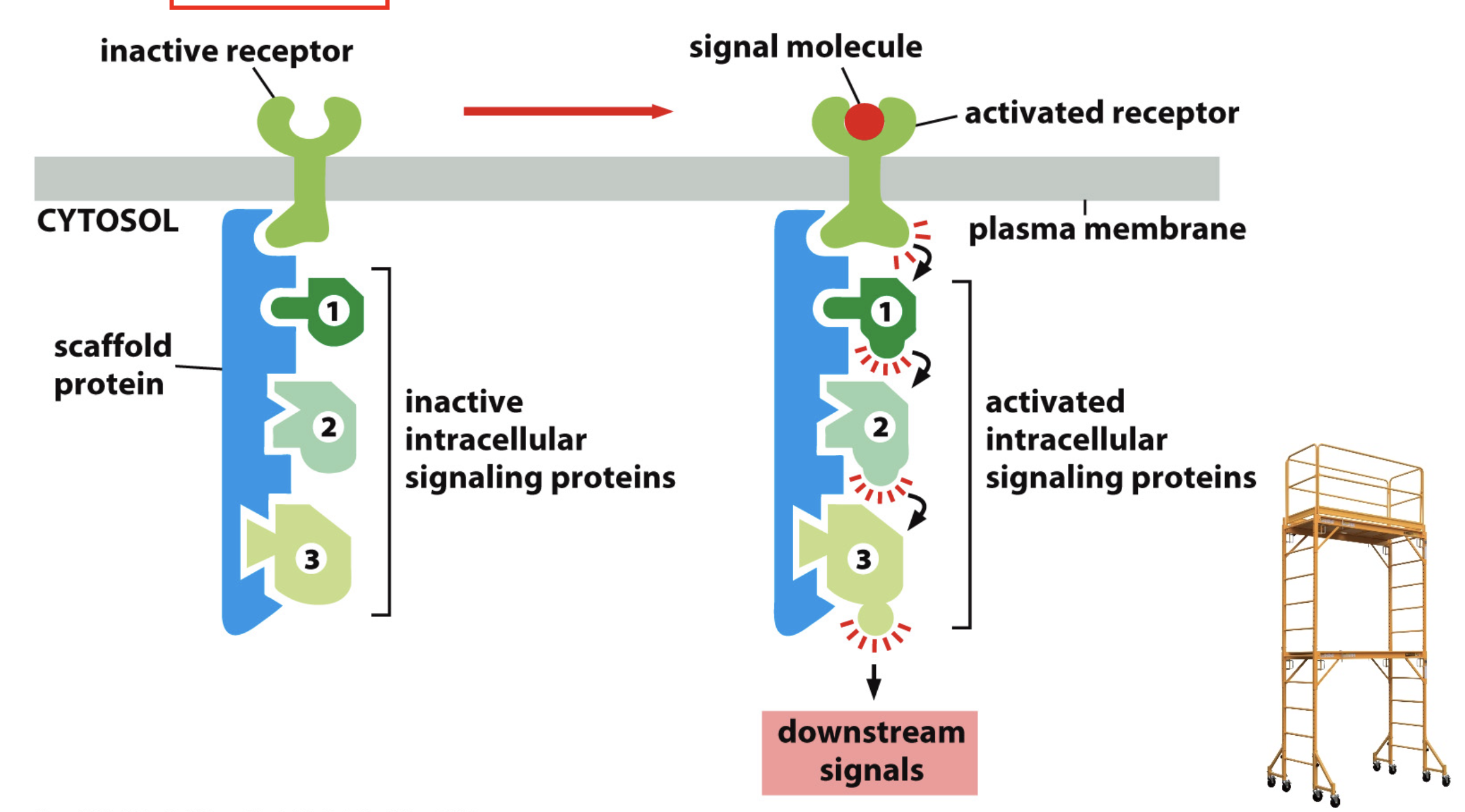
assembly of a signaling complex on an activated receptor
when things assemble on the activated receptor of a given pathway
ex: phosphates on a receptor tail so that proteins can bind and be activated to help the pathway take place
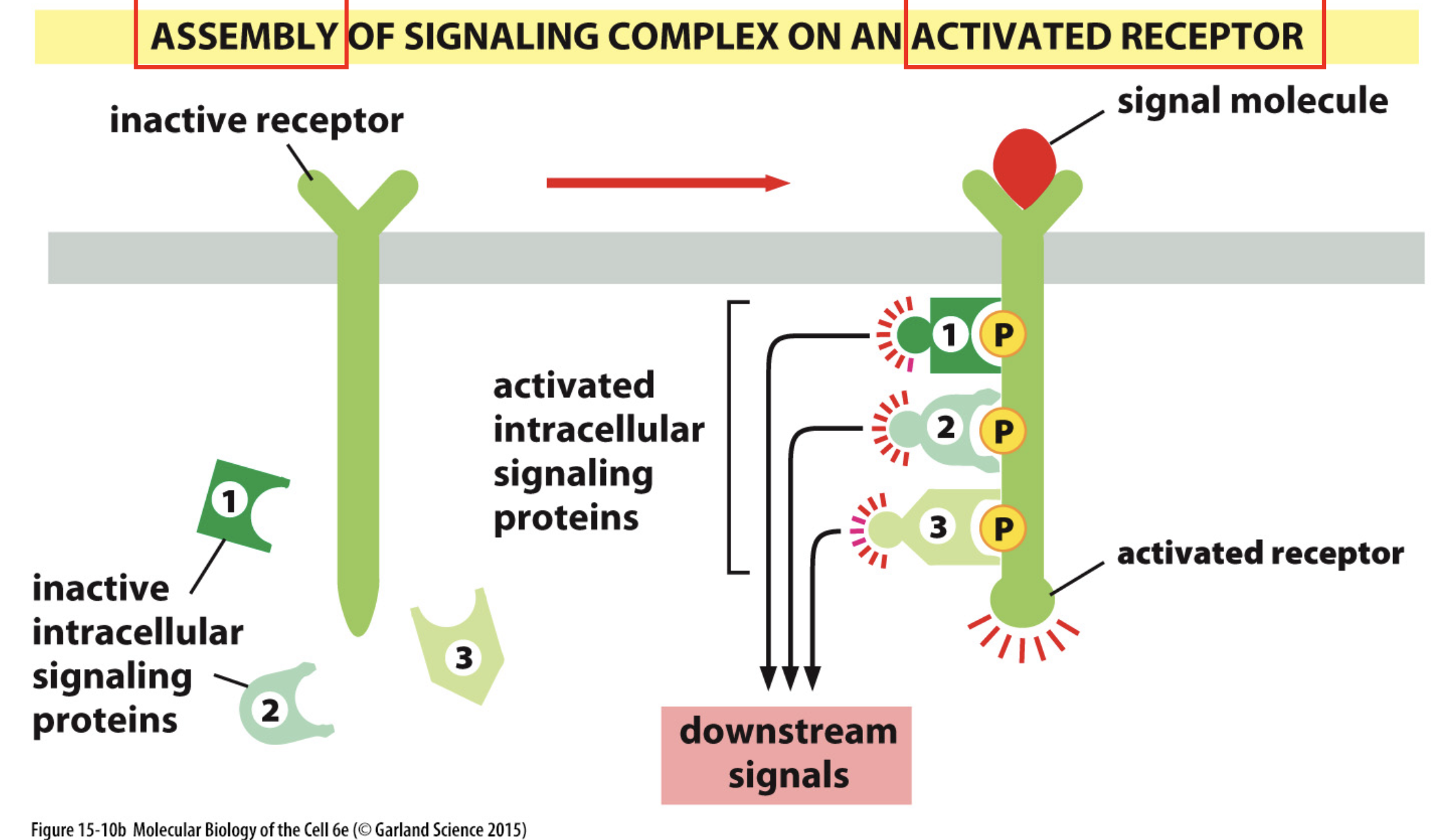
SH2 domains
when there is a binding site for a specific AA and another for something phosphorylated (usually a phsophotyrosine) that helps time the reaction
bind tyrosine-phosphorylated sequences in specific protein targets
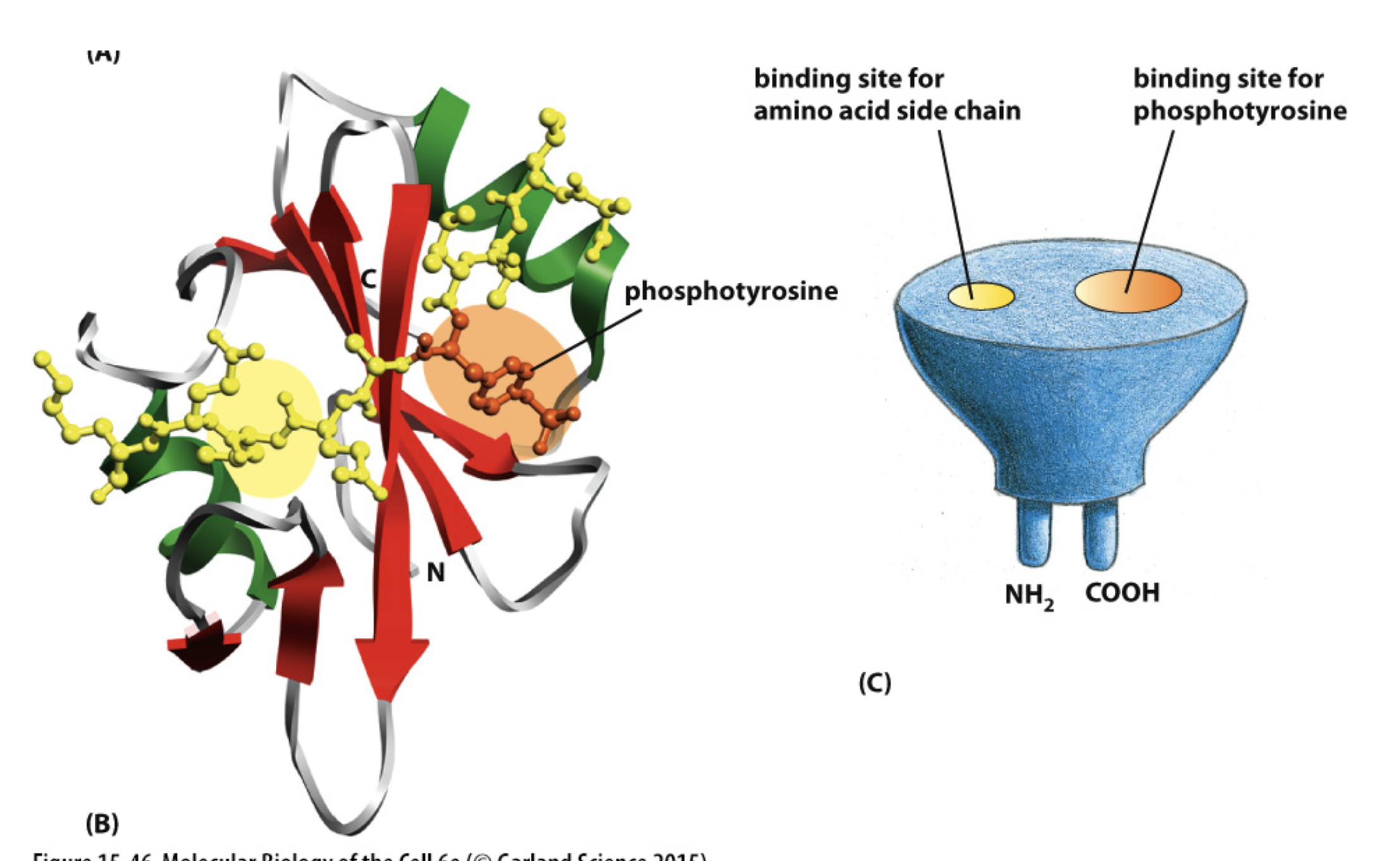
membrane as a binding site
pips assemble on the inside of a membrane and phosphates on these pips help activate proteins that bind to the pips
occurs when an activated signal molecule phosphorylates the pips even more, causing hyperphsophorylation
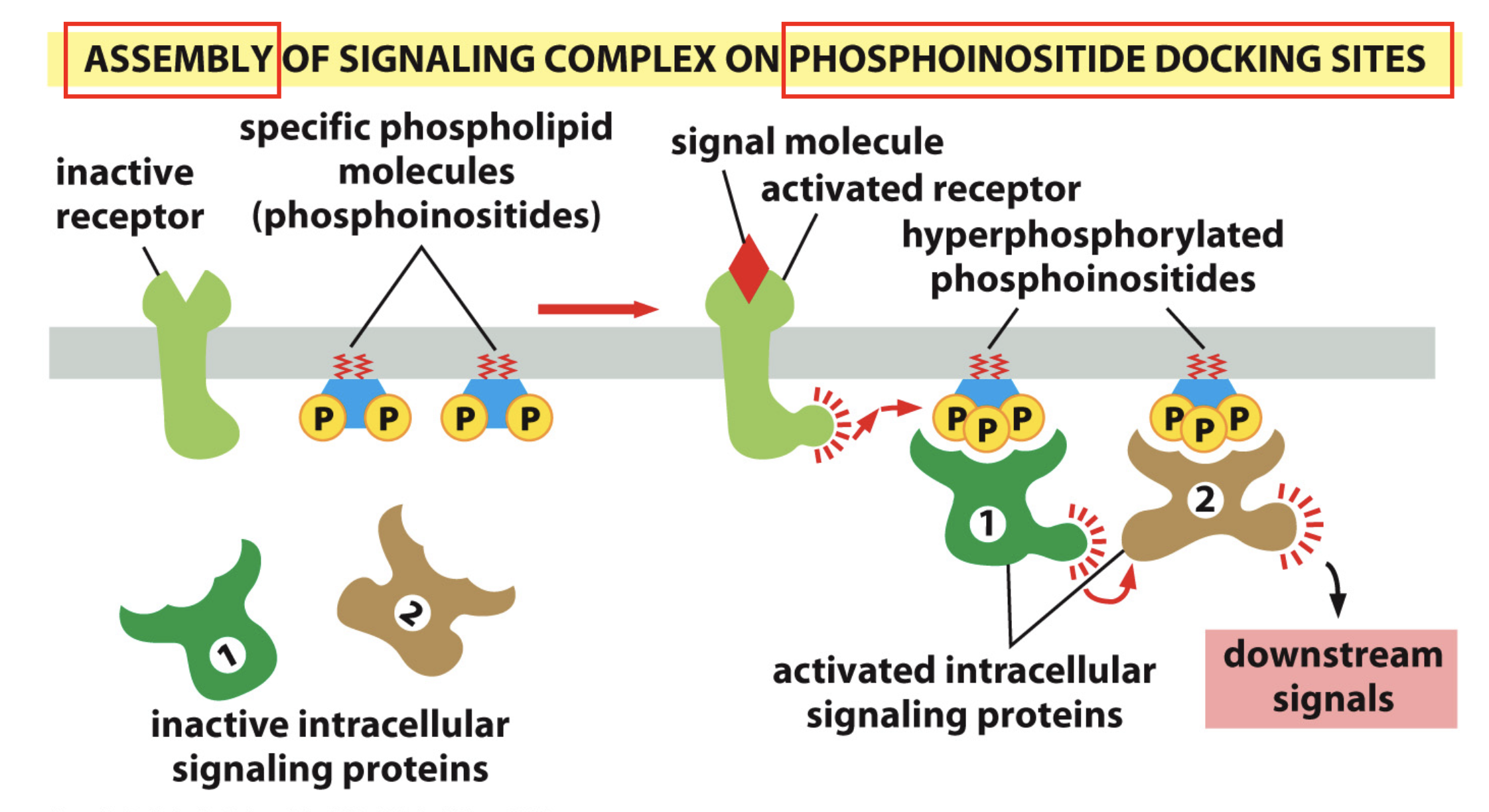
speed of response of signaling pathways depends on
whether or not a protein had to be transcribed or translated
going in and out of nucleus takes more time than something that already has all of its proteins ready
having to make proteins can cause a process to take up to hours long while ones already with proteins take a few seconds usually
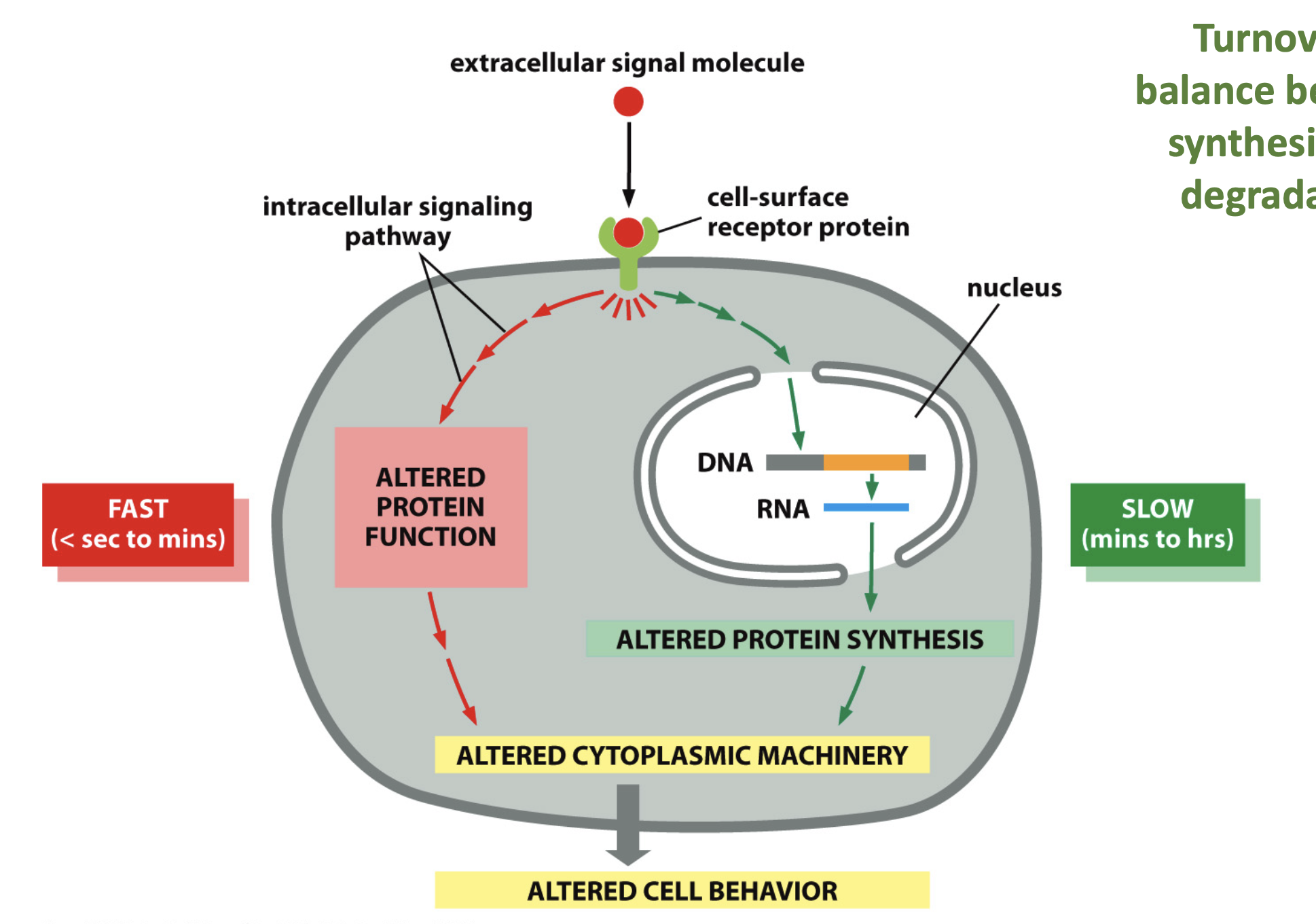
turnover
like the half-life of proteins
the tome a protein is stable before it has been used too much and needs to be degraded
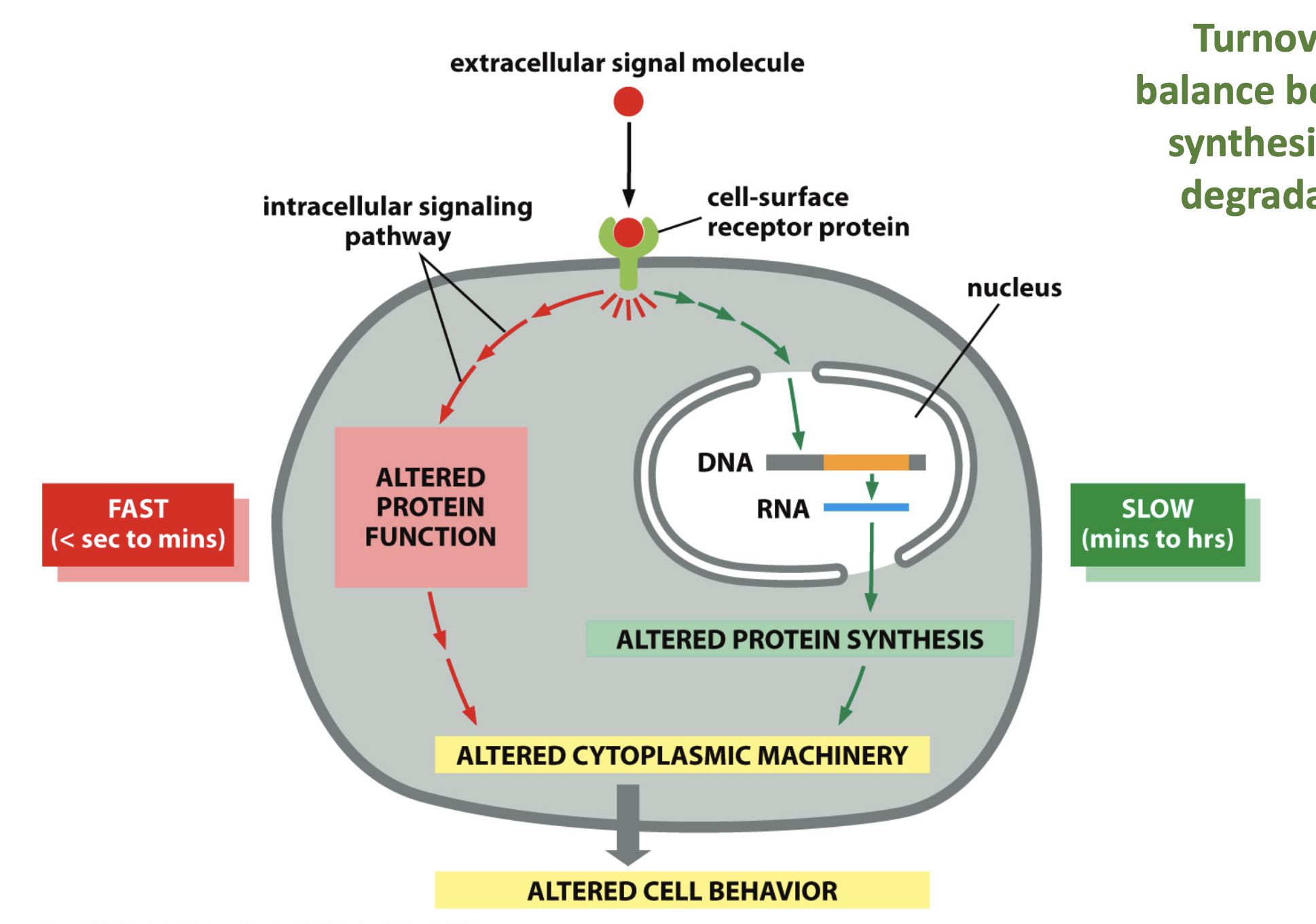
3 forms of responses in pathways
All or none: response is either 100% on or completely off. requires a certain threshold to turn on
Hyperbolic: response is on immediately but requires a bit of signal to start. As the amount of signal incr, the response incr
Sigmoidal: S-shaped curve. Requires a certain threshold to start to respond, starts to respond more and more before it reaches a max

positive feedback control
cyclic loops when a product incr the production of itself
there is still a response after the signal is removed since activated kinases can activate other inactive ones for a while after the signal is turned off
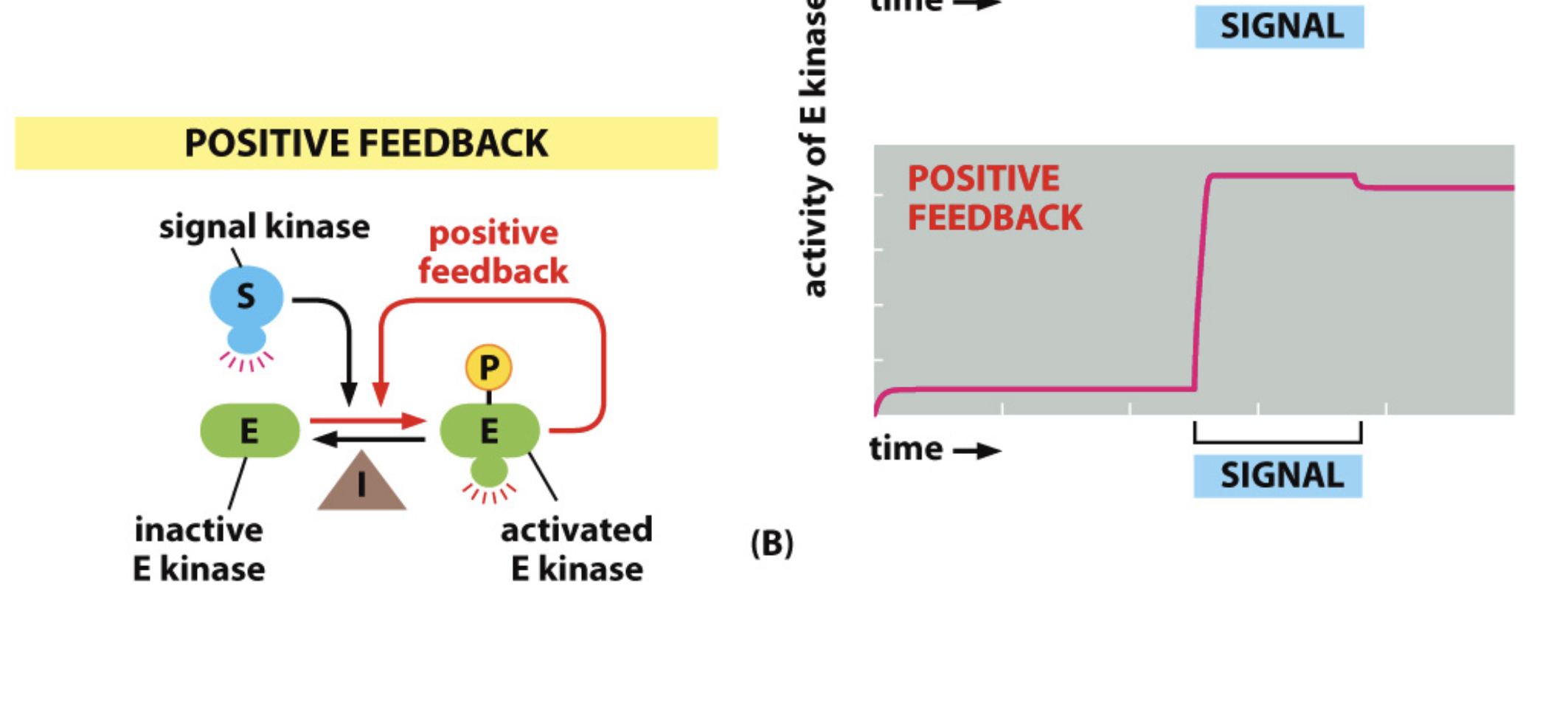
positive feedback vs no feedback
with no feedback, the response lasts as long as the signal is present

negative feedback
a product of a pathway inhibits something upstream from it

negative feedback control
when the activated kinase activates the inhibitor
short delay: high graph when the signal is received, then the product immediately activates the inhibitor, so graph is dampened
long delay: signal yields a 100% response, activated kinase activates inhibitor to stop it then another signal immediately goes to activate the response again
takes awhile to be inactivated then is immediately reactivated
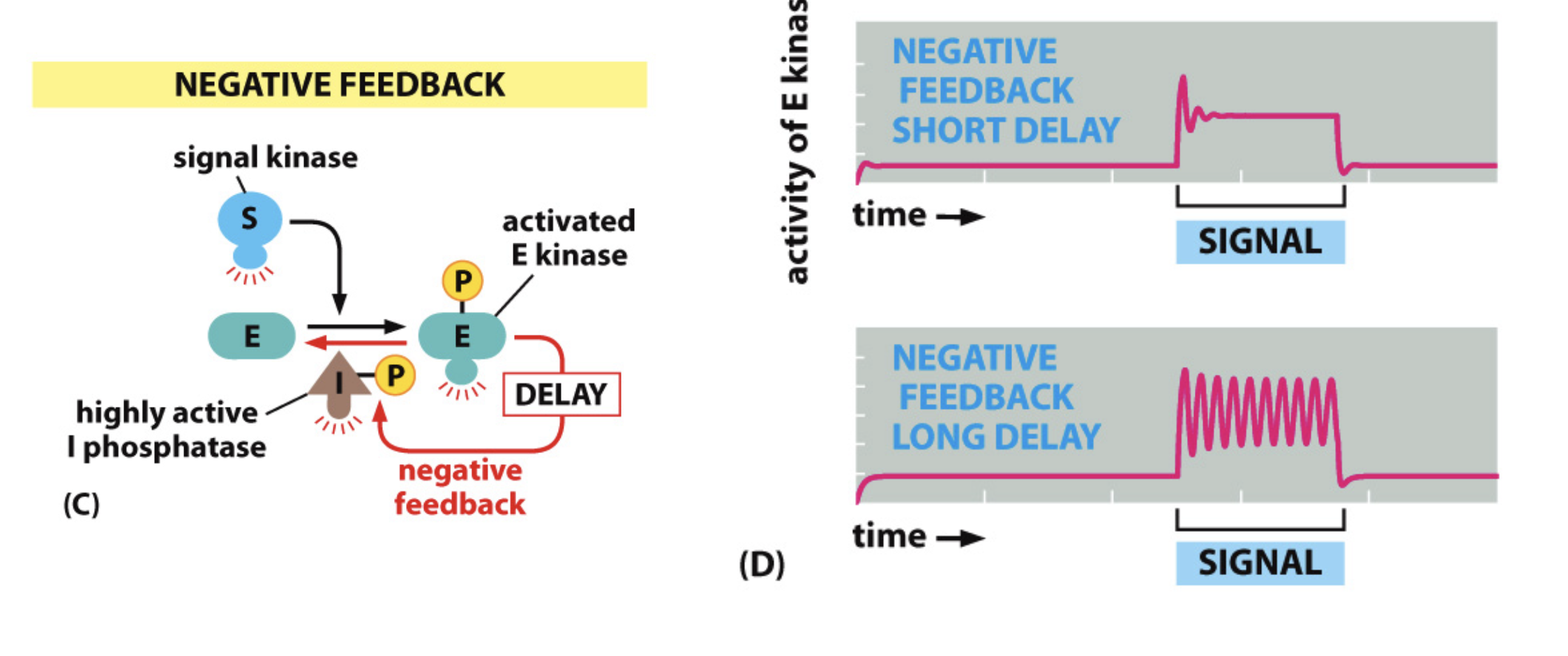
ex of long delay negative feedback control
when a cell needs to get rid of toxins produced in an immune response to gradually stop the response
Is this graph All or none or something else?
it is S shaped, and if that was all the information given, it would be sigmoidal
if information to the right was given of how different cells responded you can see if it was synchronized or asynchronized
synchronized: all cells start responding more and more
asynchronized: more and more different cells start to respond (shows all or none)
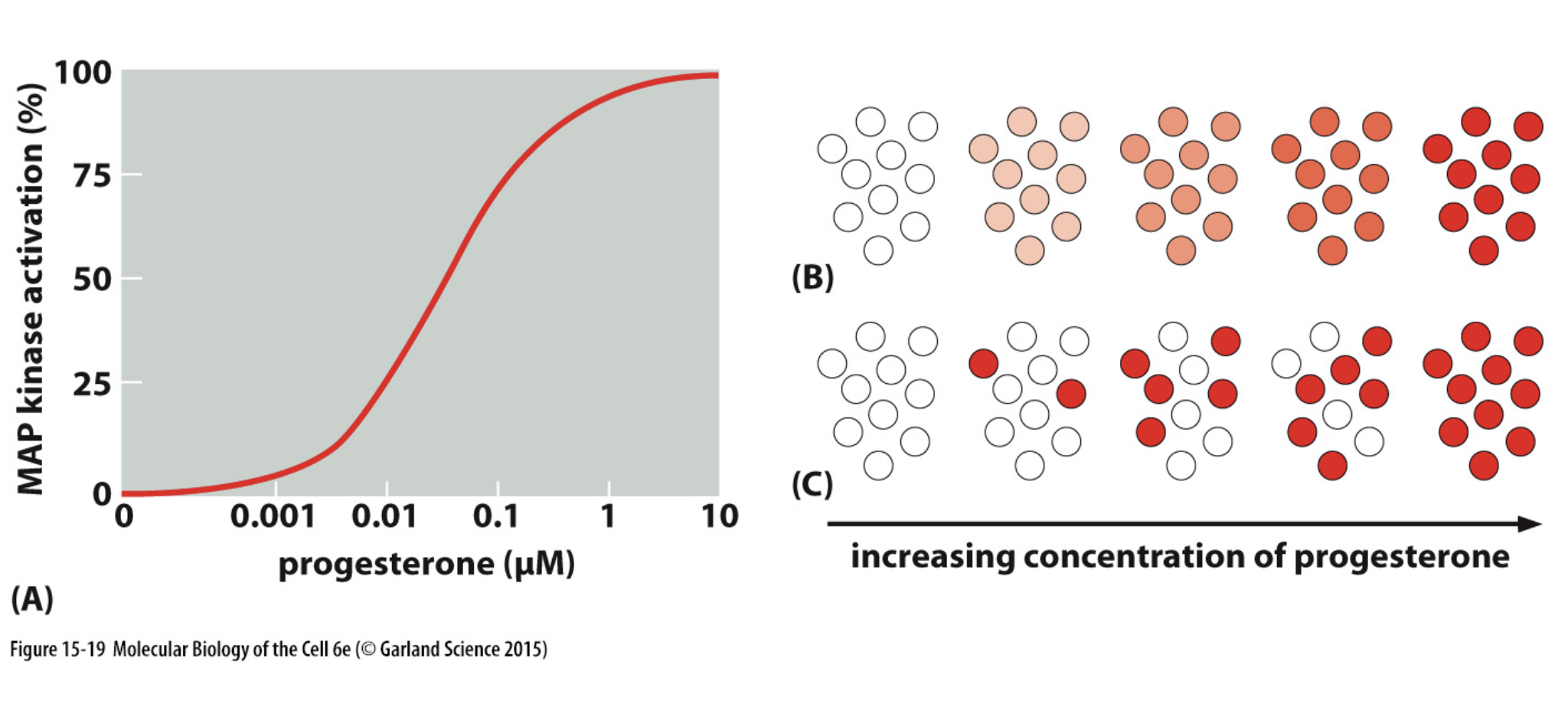
desensitization of cells to signals/ adaption
when cells get used to a signal and start to ignor ethem if they are used to a certain conc of signal and now need higher (like building up drug tolerance)
Ways for cells to NOT respond to a signal
receptor sequestration (separates and eats the protein)
receptor down-regulation (using ESCRT pathway with intraluminal vesicle leading to lysosomal degradation)
receptor inactivation via self inhibition
inactivation of signaling protein by something other than the receptor
production of an inhibitory protein (signals for an inhibitory protein to be synthesized)
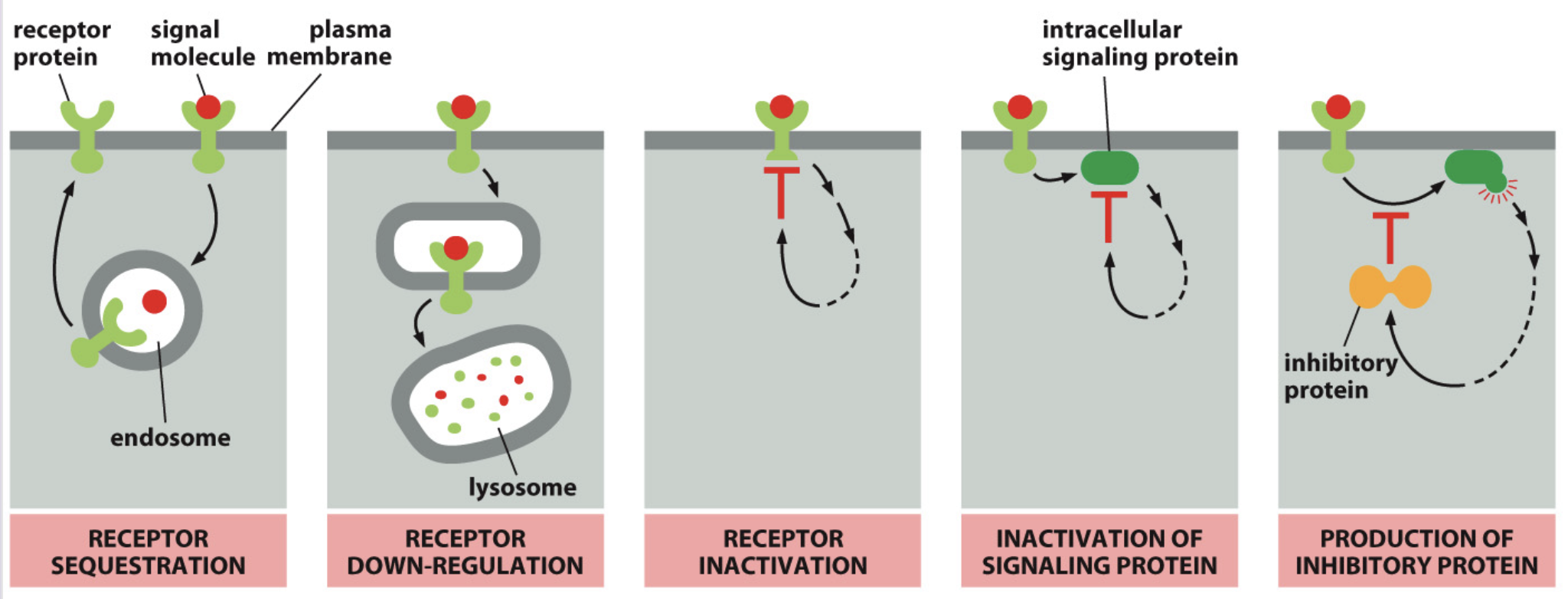
What sense use GPCRs?
sight
small
taste
GPCR mechanism
are 7 pass transmembrane proteins
can have one or more subunit
alpha and gamma have lipid tails in the membrane
alpha subunit binds to GTP/GDP and to Beta and Gamma subunits (sums to one trimeric complex)
the signal molecule binds to the receptor, which becomes a GEF and phosphorylates the G-protein, activating it
Now the activated G-protein binds to beta and gamma (with GTP bound to alpha)
Effector (brown thing) binds to alpha and alpha drops beta and gamma, which are now activated

GPCR
indent at top is the ligand/signal binding site
7 transmembrane regions
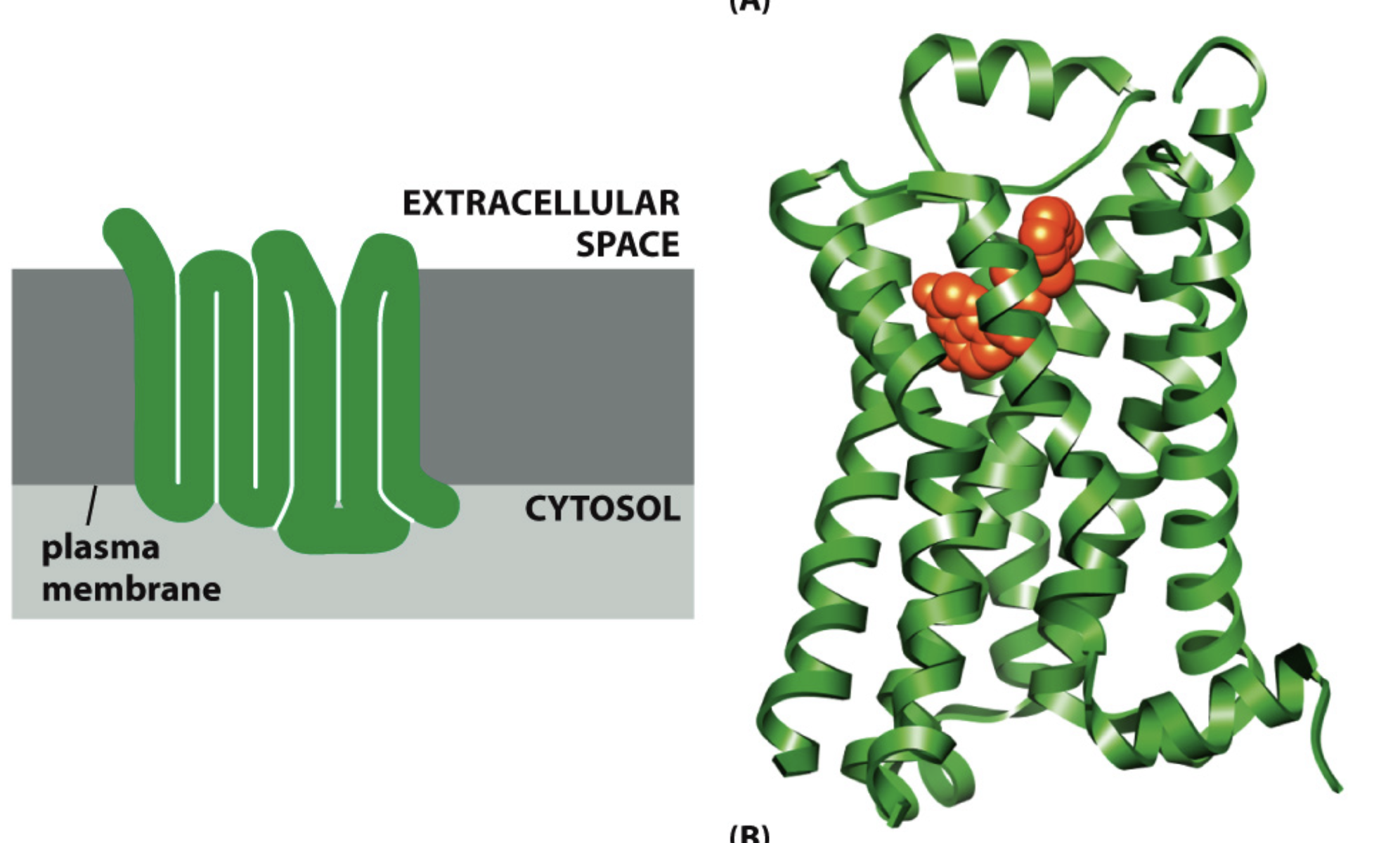
inactive form of G-protein
has GDP bound to alpha
once GTP binds again, alpha kicks off beta and gamma
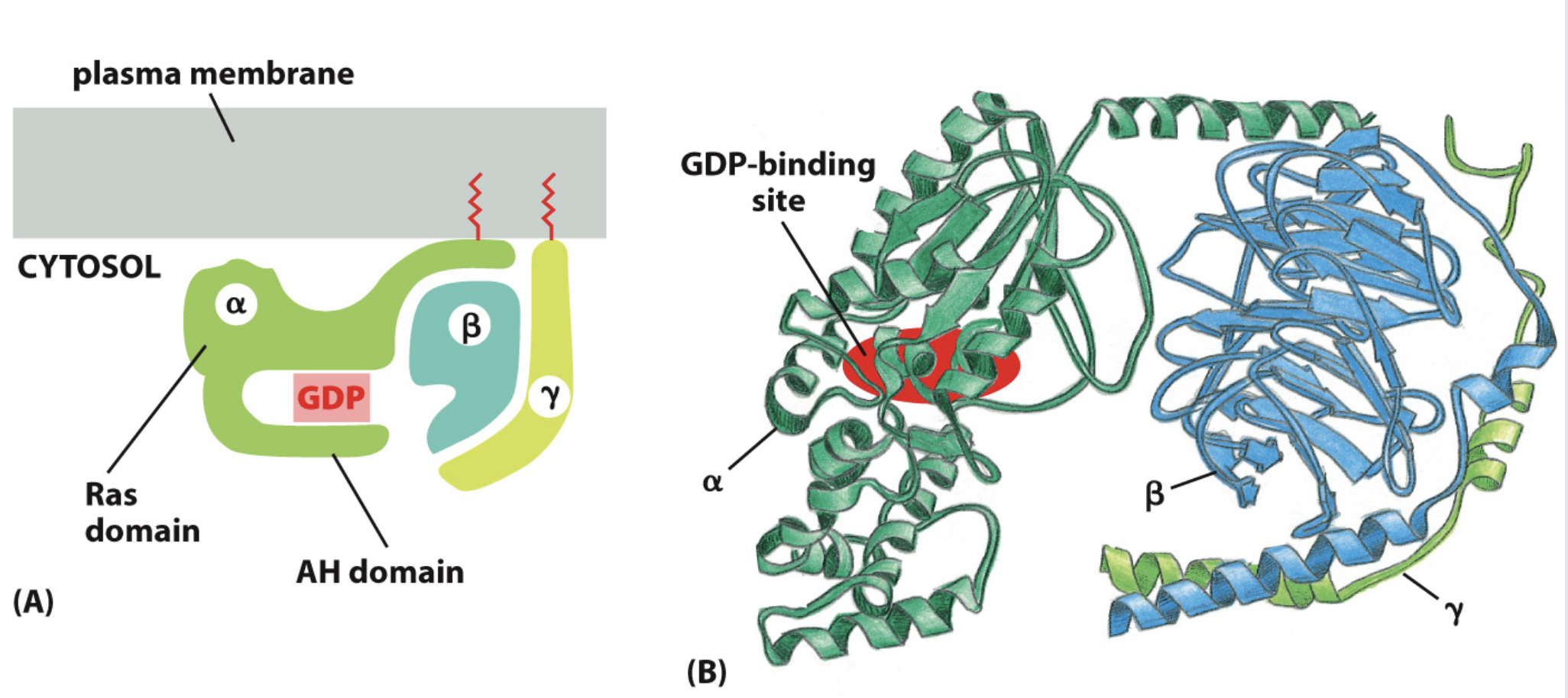
Which subunits of a GPCR has lipid tails
alpha and gamma
so they are stuck in the membrane
the beta subunit of a GPCR binds best to
gamma
then alpha
an activated GPCR acts as a
GEF
phosphorylates the alpha subunit g-protein to GTP so beta and gamma can be activated and break off

second messengers
amplify signals
usually ions, a single amino acid, or a single nucelotide
small non-protein molecules that are specific
ex: cAMP: cyclical AMP
Production of cAMP
1) ATP (from RNA) is converted to cAMP via adenylyl cyclase, which takes two phosphates off of the ATP
2) this cAMP is converted to 5’-AMP via cyclic AMP phosphodiesterase
the 5’-AMP is a positive feedback thing for glycolysis and a building block of ATP
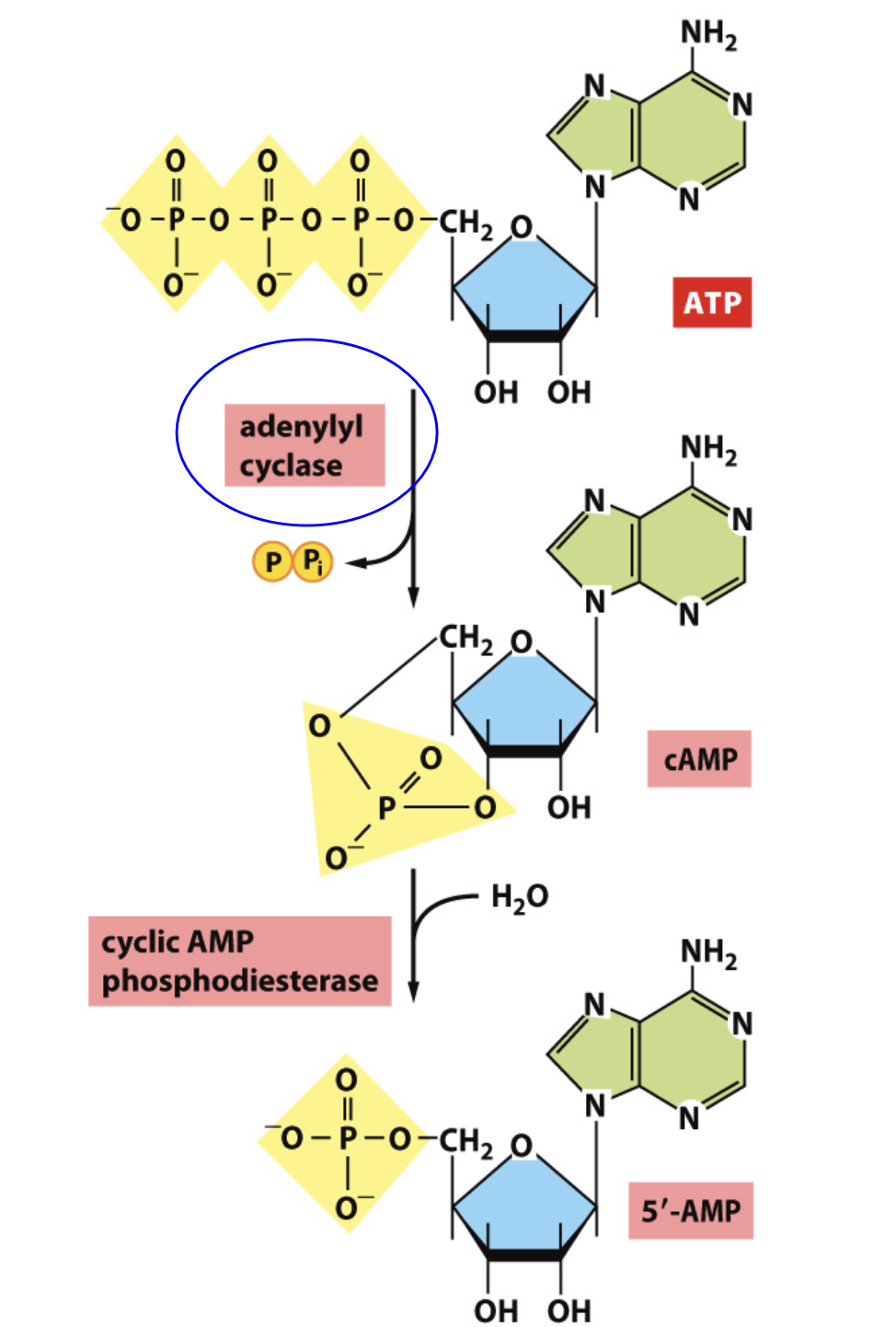
cAMP
is a nucleotide derivative of ATP
signals can alter cAMP levels
Gs: stimulatory G-protein
Gi: inhibitory G-protein
can cause very horrific affects in the body
ex: Cholera and Pertussis toxin
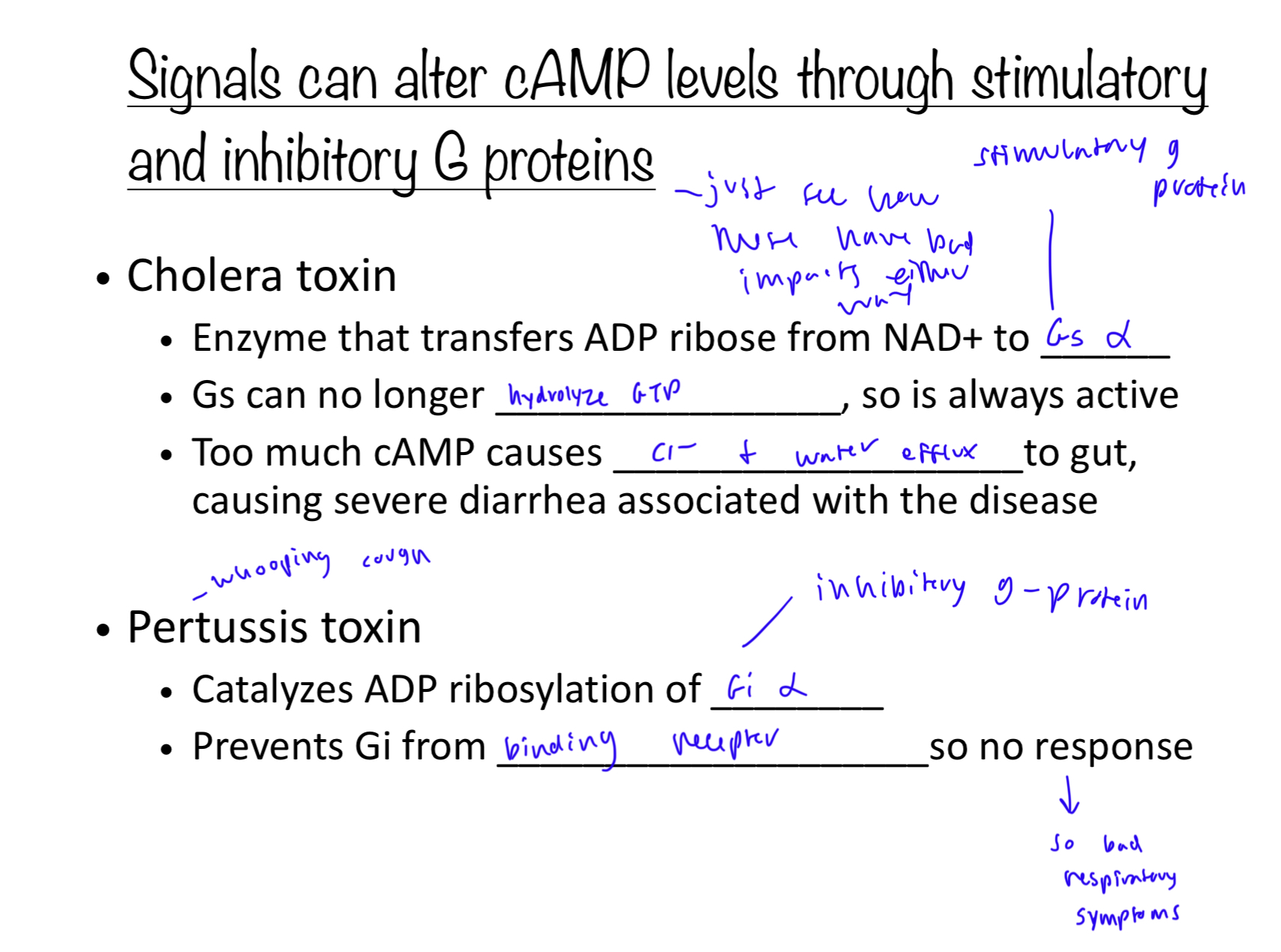
How cAMp activates protein kinase A (PKA)
cAMP is a second messenger and puts two cyclic AMPs in each of the two catalytic subunits of the PKA
this activates the catalytic subunit
the inactive PKA has 4 total subunits: 2 regulatory and 2 catalytic
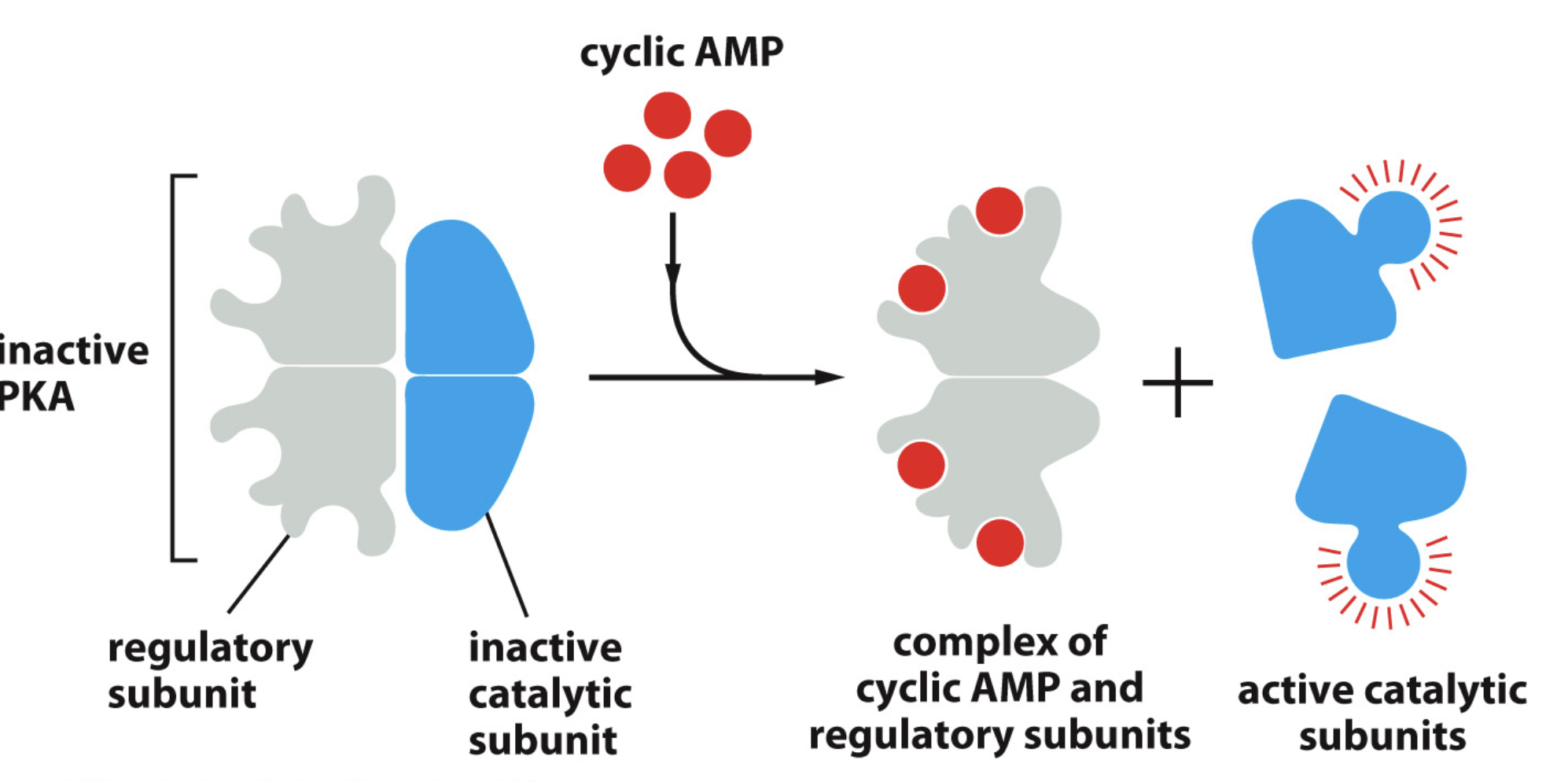
cAMP altering gene transcription mechasnism
1) signal molecule binds to the GPCR receptor and becomes activated into GEF
2) The alpha subunit of the stimulatory GPCR (Gs) is now activated by GTP from the GEF
3) adenyl cyclase is activated, causing ATP to breakdown into cAMP
4) the cAMP binds to the regulatory subunits of the previously inactive PKA, causing it to break away and be activated
5) the activated PKA goes into nucleus (importin, NLS)
6) once in nucleus. the activated PKA activates CREB
7) CREB is now phosphorylated and CBP (CREB binding protein) binds to it at the enhancer at the CRE (cAMP response element) on the enhancer
8)This causes transcription of all genes with the CRE enhancer that is also in euchromatin
